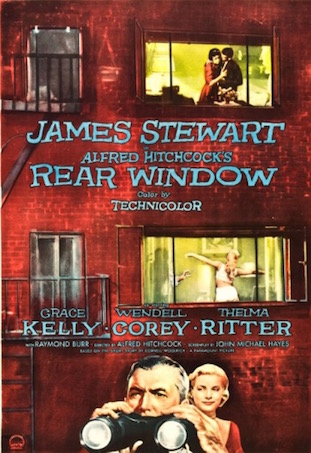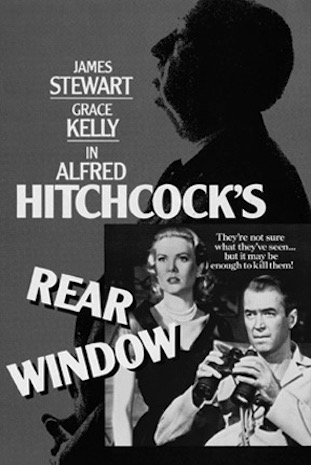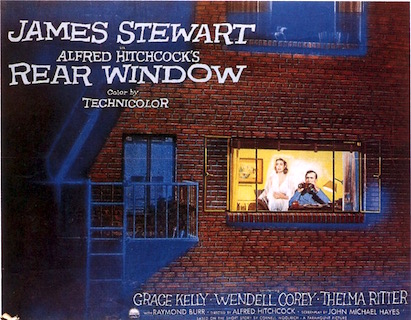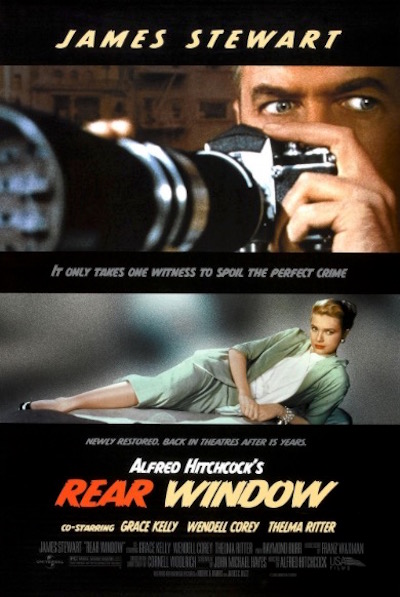
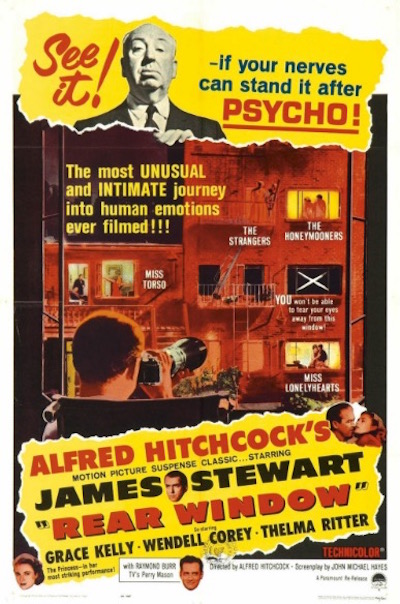
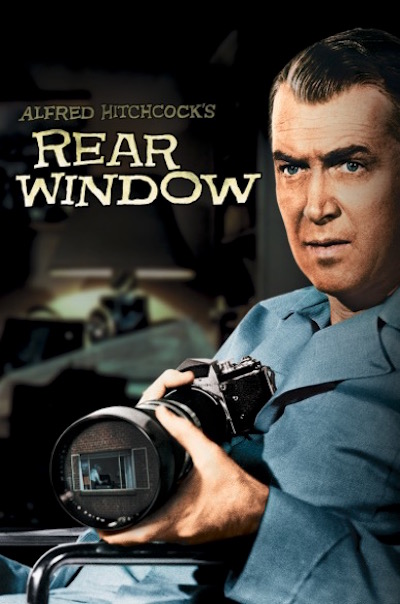
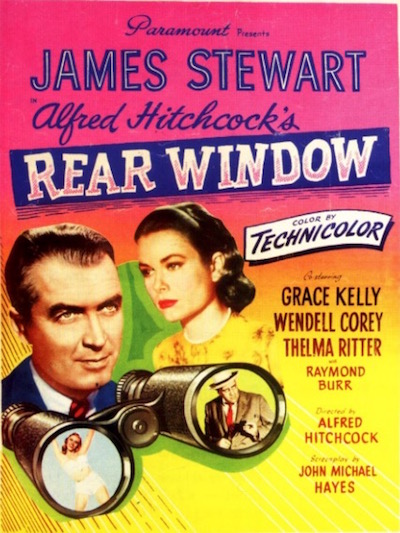
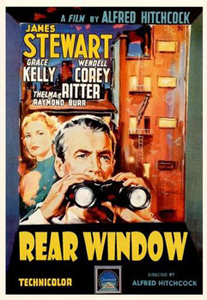
Director: Alfred Hitchcock
Cast: James Stewart, Grace Kelly, Thelma Ritter, and Raymond Burr.
Mystery fans have, undoubtedly, concluded that Rear Window is a true film classic. Now, with a newly restored 35 mm re-release, they can rekindle their admiration for Hitchcock's directorial genius.
Based on a 1942 short story by William Irish, published under the pseudonym, Cornell Woolrich, Rear Window is just about the epitome of moviemaking. Although the film appears to take place entirely in a cramped, apartment, Hitchcock insisted upon building one of the most elaborate sets ever constructed at Paramount for this film.
From the confines of his Greenwich Village apartment, a wheelchair-bound news photographer, "Jeff" Jefferies, peers out on a world that he's physically separated from. He sits, cocooned in a full leg cast, consumed with the lives of his neighbors. There's Miss Lonelyheart, a spinster who pathetically role-plays at courting her imaginary beaus, a struggling songwriter; a nosy neighbor and her barking dog; and the sexual exploits of a sexy young dancer who flirts with, then fends off, man after man in her cramped, walkup apartment.
Thelma Ritter, as Jefferies' crusty nurse, Stella, scolds him for becoming addicted to spying on his neighbors. "We've become a race of Peeping Toms", she warns him. Jefferies pays her no heed, in part because he basically is an aloof watcher of life, rather than a participator. His career has taken him around the globe, catching the life of others on film.
When he is injured while on assignment and subsequently laid up in his apartment with a broken leg, he takes out his telephoto lens and becomes a voyeur, escaping from any involvement with real life relationships of his own. Even the cool and elegant beauty of a luminous Grace Kelly, cannot compete with the fractured lives that lure him to gaze out of the rear window of his apartment. Kelly, never more lovely in a parade of cocktail dresses from fashion maven, Edith Head, tries vainly to convince Jefferies to take another look at her, and at the life they could build together if only he could make a commitment.
Hitchcock's attention to detail was legendary, and designer Head, explained, "Every costume was indicated when he sent me the script. There was a reason for every color, for every style, and he was absolutely certain about everything he settled on." With this release, viewers can appreciate even more the vibrancy of the color palette that Hitchcock worked so hard to obtain.
Raymond Burr, as the shadowy wife murderer, forces Jefferies to slide into action, and to enlist his girlfriend's aid to solve the crime. An interesting note: while actor Raymond Burr struggled with a lifelong weight problem he had, in fact, trimmed down considerably before the first day of shooting for this movie. Hitchcock insisted on having the actor don heavy padding to make him a more ominous and threatening figure.
Moviegoing itself is, in effect, a form of voyeurism. We sit in the darkened recesses of a theater - surrounded by other people - yet all alone in our attachment to the images we view on the screen. Rear Window, however, leads us to an understanding that human relationships require much more than the limited view that can be seen through the lens. The mastery of this Hitchcock classic, also reminds us that great filmmaking requires more than actors and a camera. It requires vision. Don't miss your chance to view, once again, this extraordinary film.
